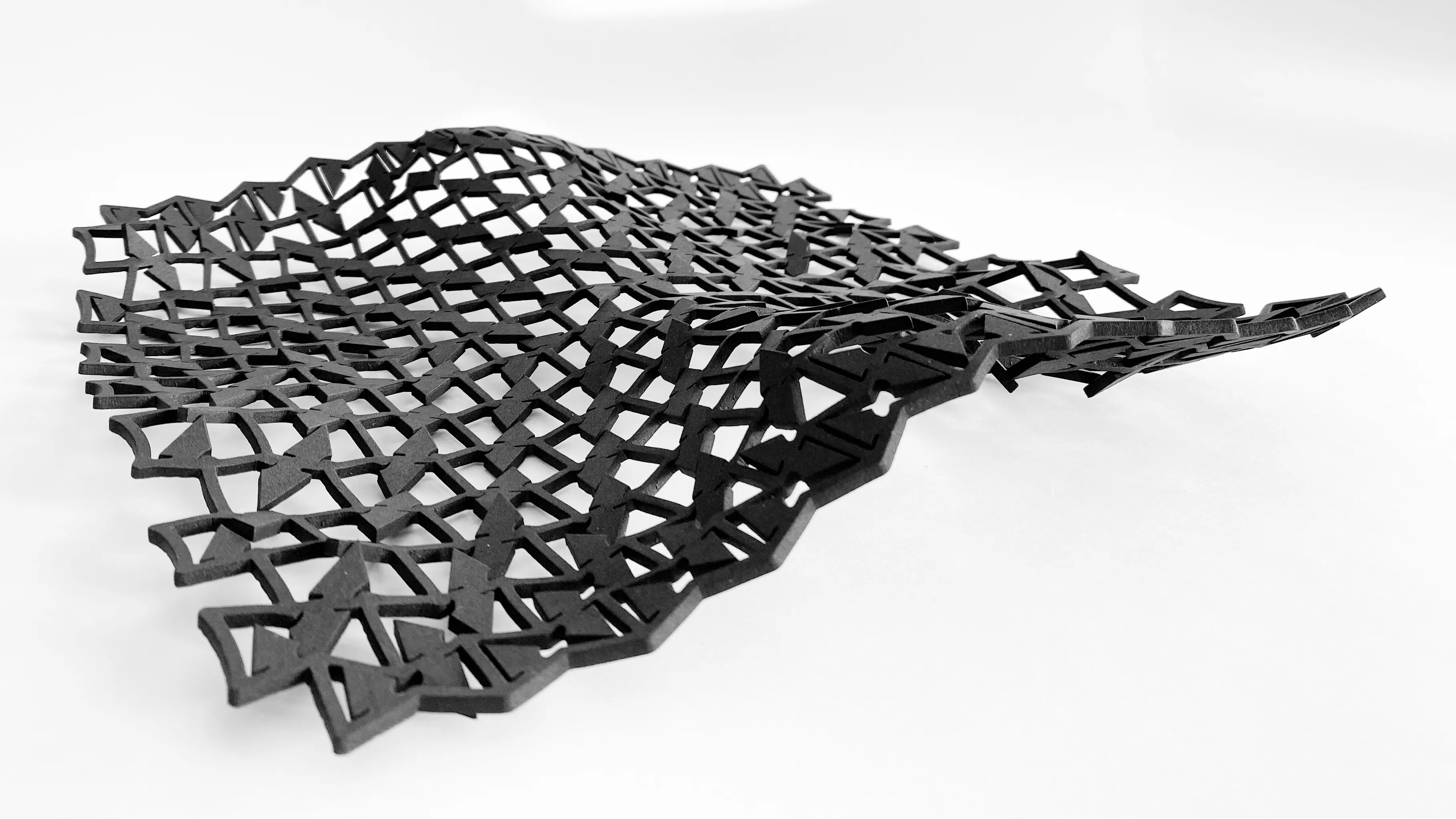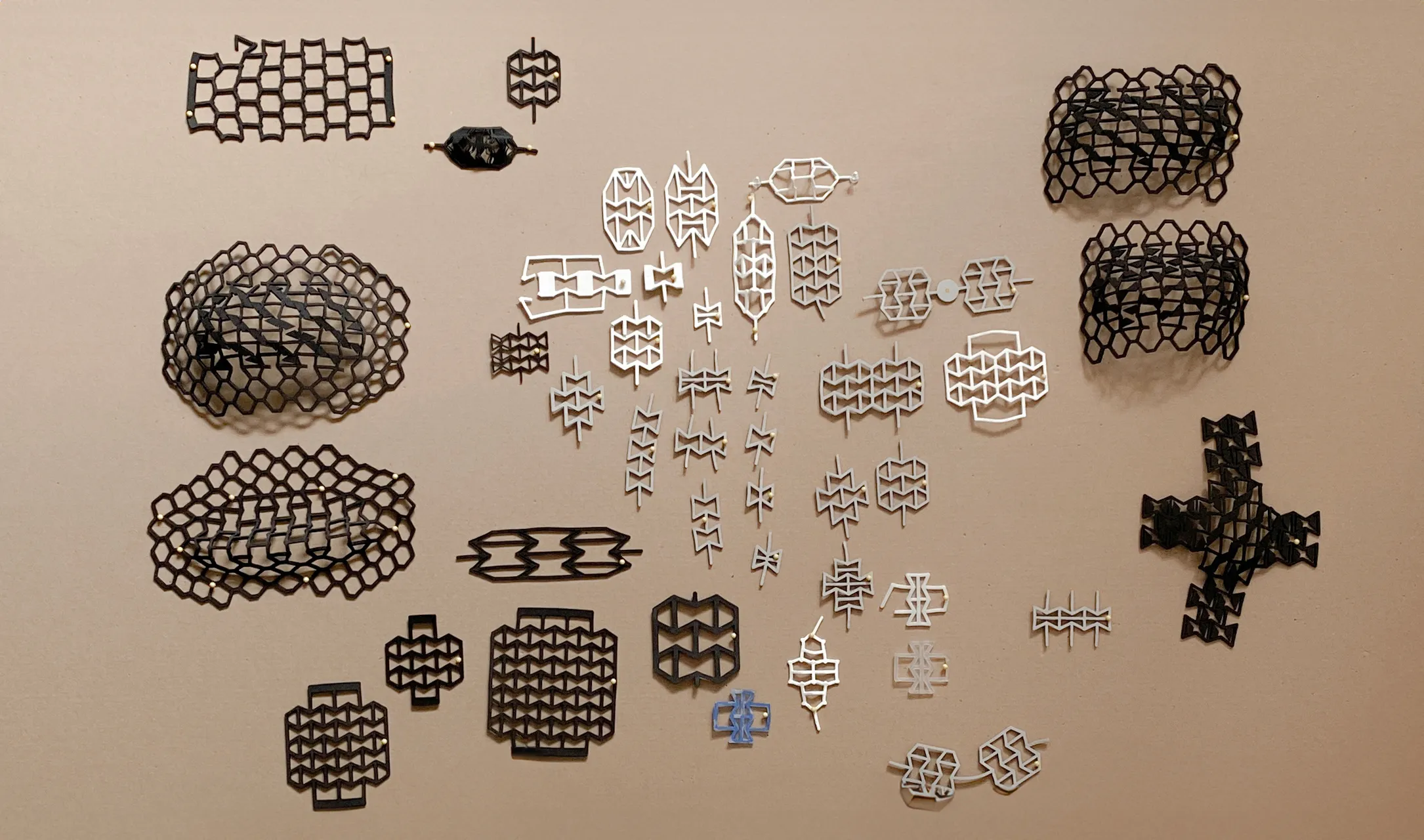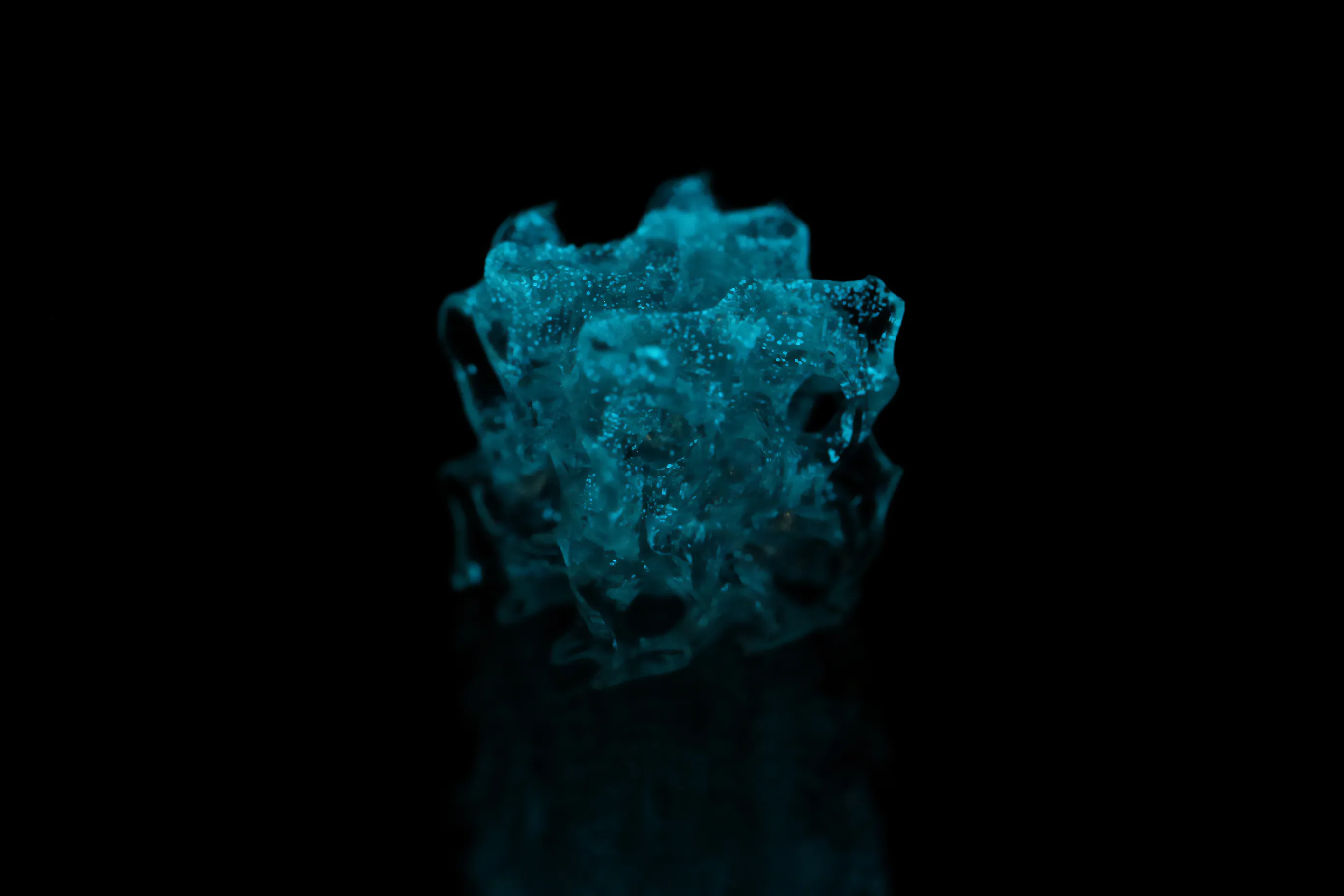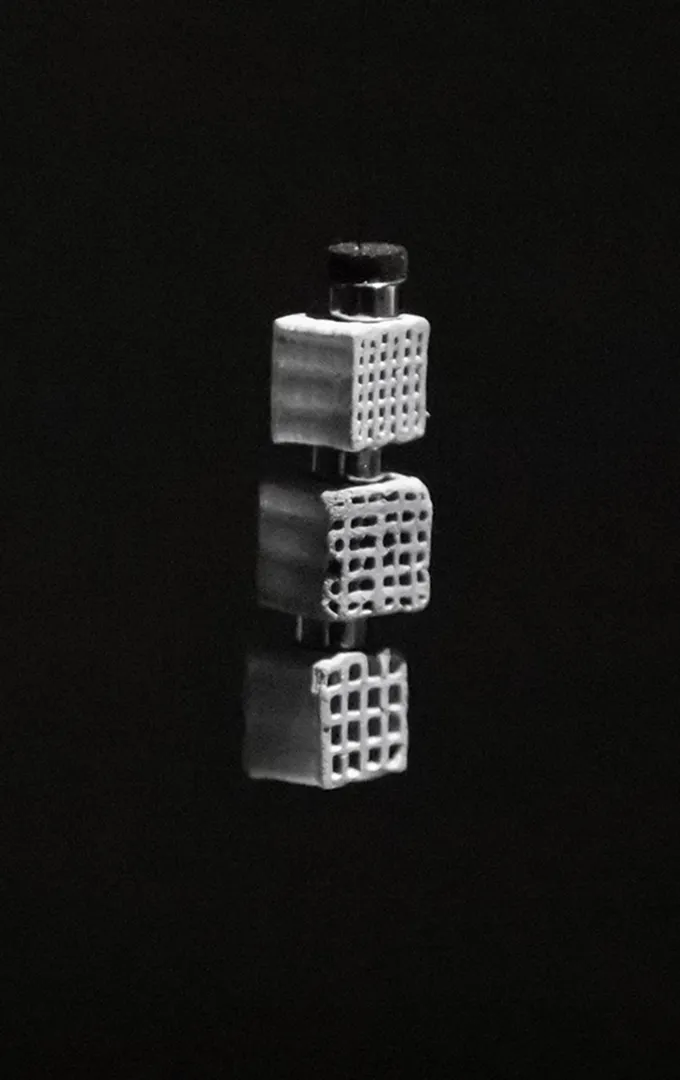Morpho-Active Surfaces
Active metamaterials that morph their shape while stretching.
What if we could make a material active through its form alone? That’s the idea behind Morpho-Active Surfaces — elastic materials that move, shift, and adapt not because of what they’re made of, but because of their structure. This taps into the fascinating world of mechanical metamaterials: materials engineered with geometry that trigger precisely controllable transformations.
Researchers
Institution
Tags
Properties
What’s so special?
Programmable 3D surfaces
These initially flat surfaces can “pop up” into 3D surfaces when stretched or pulled. Repeating patterns inside the material act like built-in mechanisms that control its behaviour. Some of these patterns are designed to flip or buckle outward, which lifts the flat surface into a curved or folded form. Multiple cells of the pattern work together to morph the material in a controlled manner.
Reversible
When the force is removed, the surface can revert to its original flat state. The surface is strong enough to handle this change repeatedly in a very controlled manner. This kind of mechanism is called a compliant mechanism: a single-piece flexible structure that deforms when forces are applied and can return to its original shape.
Finite element model of the auxetic gripper under tension by Lorenzo Guiducci
Bistable
The surface can not only morph its shape but also snap between two different states and stay in either one without needing constant force to hold it there. It only takes a bit of energy to switch from one state to the other, kind of like a light switch—it stays put until you flip it. This makes it useful for things like snap-fit parts, switches, or materials that change shape on command.

The material's bistable behaviour can be used to create surfaces that are locked in a 3d state, like this surface.
Auxetic
Some of these surfaces behave in a surprising way: when you stretch them in one direction, they also expand in the other, unlike most materials, which get thinner when stretched. This behaviour is called “auxetic” and can be observed in nature, like on the skin of salamanders or snakes.

Auxetic behavior observed in a python's skin allows it to stretch in a distinctive manner, which facilitates movement. As the snake crawls, its skin swells and changes shape, helping propel its body forward effectively.
©Richard Ley (MoA)
The hexagonal structure on the left gets thinner when stretched. On the right, a variation of the structure expands when stretched, showing auxetic behaviour.
Applications
Morpho-Active Surfaces can be helpful for applications in soft robotics, where this kind of geometry could create grabbing mechanisms or other shape-changing designs without hinges or connectors. Other potential applications are in architecture, where adaptive 3D structures could be made from a single material.
©Richard Ley (MoA)
Grabbing mechanism by Morpho-Active Surface.
Composition
Morpho-active surfaces are metamaterials whose behavior comes from their structure rather than their base material. Many samples in this showcase use three-millimeter-thick EVA rubber foam as the base, but other similar materials can achieve the same effects.
©Richard Ley (MoA)
Metamaterials get their mechanical properties and behavior based on the shapes that make up the cellular structure.
“…led by discovery rather than predefinition, we have adopted a trial-and-error strategy, leaning towards geometric features that were of value for us and learning how they influence the structure to fine-tune the in-plane and out-of-plane transformation. This process has led us to designing and fabricating auxetic surfaces that can be three-dimensionally programmed, reset, and reprogrammed. Like in biology, certain functions programmed at the cell level, can have an effect at a higher, systemic level, creating new, emergent behavior, depending on how cells are assembled together.”
Fabrication
The design and fabrication are inspired by kirigami, a traditional Japanese art of cutting and folding paper to create complex forms. Like kirigami, these surfaces use patterns of cuts to guide their movement and reshaping, making the transformations reversible and repeatable.

Prototypes from the design process of Morpho-Active Surfaces.
To produce these cellular surfaces, you only need a tool to cut the foam, whether a sharp knife or digital fabrication tools like a laser cutter. This makes it accessible to people from different disciplinary backgrounds.
©Richard Ley for Matters of Activity — Humboldt-Universität zu Berlin
©Richard Ley for Matters of Activity — Humboldt-Universität zu Berlin
©Richard Ley for Matters of Activity — Humboldt-Universität zu Berlin
©Richard Ley for Matters of Activity — Humboldt-Universität zu Berlin
Choose the design of the geometric pattern
Load the material into the laser cutter. In this case, EVA rubber foam is the base material.
The augmented surface is ready to be activated.
Feedback
Heidi wonders what you think about this research. Let her know!

Researcher of Morpho-Active Surfaces
Links
Want more details about the Morpho-Active Surfaces?
Links
Want more details about the Morpho-Active Surfaces?
Read the Research paper: On Material Grammar: Learning from and Designing with Unstable Behavior in Thin Sheet Materials
Watch a video: MAKING material move: Heidi Jalkh - Auxetic Materials
Have questions? Get in touch

